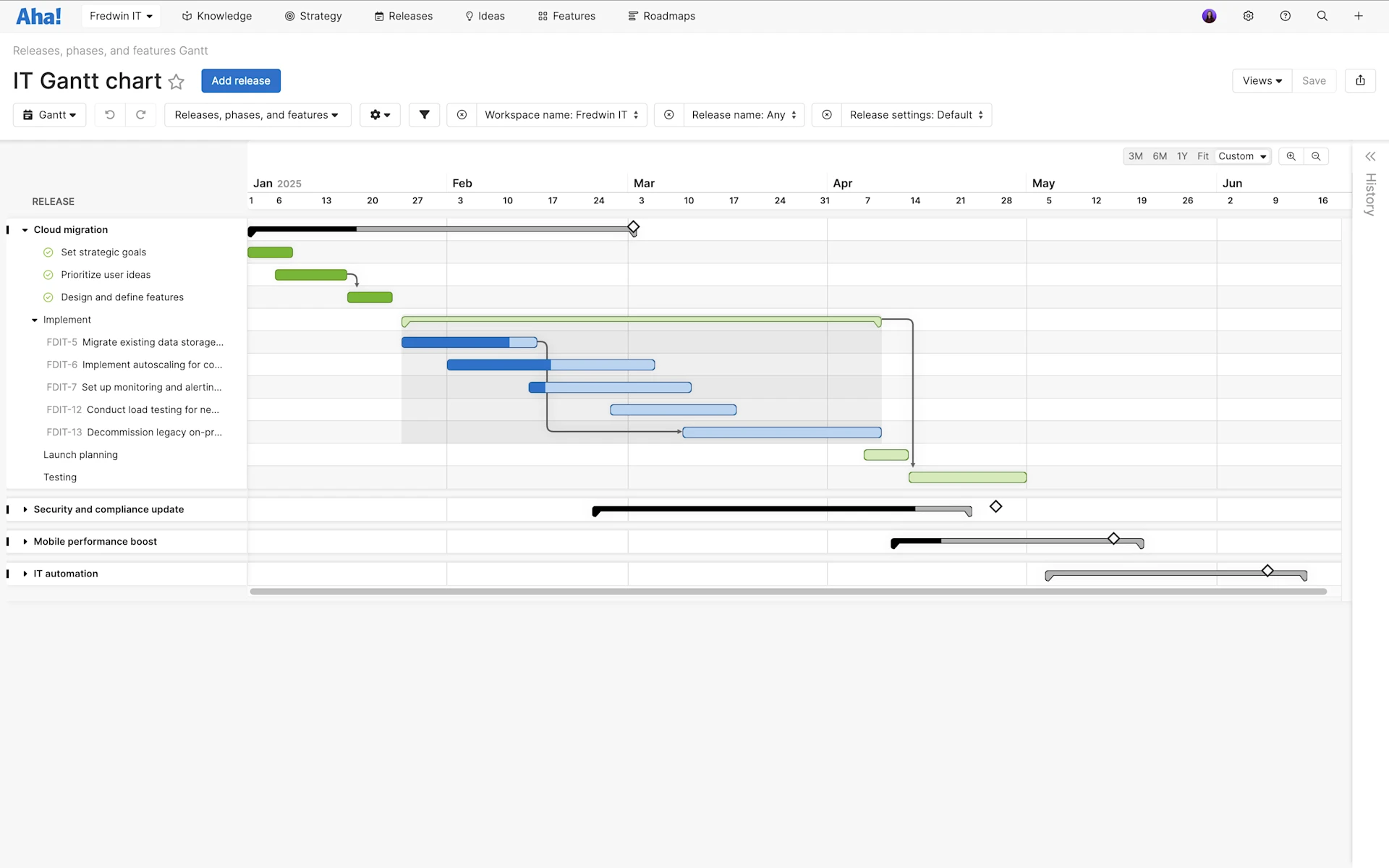Modern release management requires close coordination and clear visibility across teams. Without it, timelines slip and quality suffers. That is why many teams use purpose-built tools like Aha! Roadmaps and Aha! Develop to plan releases, track progress, and align stakeholders around what is being delivered and when.
In this guide, you will find practical guidance on how to support both internal and external releases — including how to collaborate across the organization to deliver reliable releases that keep systems running and customers happy.
Skip ahead to any section:
What is the release management process in IT?
Release management has changed significantly in recent years. In the past, IT teams deployed software on-premises using a waterfall approach. Releases were infrequent, tightly scheduled, and often handled by a single team. Now, with cloud infrastructure and agile workflows, releases are faster, more collaborative, and continuous.
Modern IT teams manage many types of releases — from launching new customer-facing functionality to rolling out internal tools and system updates. No matter the audience, the goal is the same: Deliver releases that support the needs of the business.
Here is a simple way to think about the two primary release types:
Release type | What it supports |
Customer-facing | Product delivery — new features, updates (e.g., launching a redesigned mobile app) |
Internal tooling | Internal operations — systems, access, tools (e.g., rolling out a new single sign-on platform) |
Release vs. deployment vs. delivery
The terms release, deployment, and delivery are sometimes used interchangeably, but they refer to different parts of the process. It helps to clarify the distinctions:
Deployment: The technical action of moving code from one environment to another — such as from staging to production
Release: The moment when new functionality is made available to users. It might coincide with a deployment or follow it if features are toggled on later. For example, you might deploy a new feature to production on Tuesday, but keep it hidden behind a flag until the official release on Wednesday.
Delivery: Refers to the full cycle of work — from planning and development through to release. This is often called the software development lifecycle.
Clear definitions promote alignment across teams and ensure everyone understands what is happening, when, and why.
Related:
Top
What are the components of release management in IT?
Releases vary in size and impact — but the steps to get them out reliably are often the same. Strong coordination across phases helps avoid common pitfalls like missed checks or misaligned timelines. A typical process includes the following steps:
Plan: The team defines the scope, timing, and dependencies for the release.
Build: Developers write code and deploy it to a testing environment.
Test: QA teams validate functionality and identify issues.
Prepare: Final checks are completed before production.
Deploy: Changes are released to users.
IT plays a key role throughout this process. Whether you are managing the infrastructure, coordinating environments, or ensuring compliance, your work supports seamless delivery. For example, you might coordinate a database upgrade ahead of a customer-facing launch or handle access controls for a new internal system like single sign-on.
How IT and product teams collaborate on releases
Most releases are cross-functional. Product teams lead feature planning and prioritization, while IT owns key aspects of how and when releases are executed. This can include infrastructure readiness, CI/CD workflows, deployment timing, and system health monitoring. For internal rollouts, IT teams often partner with stakeholders in HR, finance, or security to coordinate timing and communication.
That is why shared planning is essential. Aha! Roadmaps helps align everyone around what is being delivered, who is responsible, and when it needs to happen. The more visible and connected the process is, the smoother the release.
Related:
Top
What is the role of an IT release manager?
